Before Christmas, Ofsted warned schools not to use part-time timetables to manage pupils’ behaviour.
Although local authorities may well collect details of pupils on part-time timetables within their area, I’m not aware of any national data showing how many pupils might be affected.
With this in mind, I’ve tried to use attendance data to estimate the scale of the issue.
Recording part-time timetables in school registers
Statutory guidance on recording attendance in schools’ registers provides a list of different codes that schools should use in particular circumstances. These are recorded for each pupil for each session (morning and afternoon registration each day).
However, there is no code specifically for part-time timetables.
Many local authorities (such as Birmingham) advise the use of Code C (authorised leave of absence) for school sessions pupils are not expected to attend.
Let’s have a couple of examples of register entries for some fictional pupils over a 6 week period.
This pupil attended every session. The forward slash and backward slash codes indicate being present at school.
Now let’s look at a pupil on a part-time timetable.
This pupil attended every session in weeks 1 and 2. But from week 3, they started on a part-time timetable, attending school only in the morning.
Data
We use data from FFT Attendance Tracker covering the 2022/23 academic year up to the end of the Spring term. This includes some 10,000 schools in England.
Aspire Attendance Tracker
Schools can track, analyse and compare their attendance data against 1,000s of other FFT schools using Aspire Attendance Tracker.
Log in to Aspire to access Attendance Tracker – log in here.
Not an FFT Aspire user? Learn more here.
We count the number of sessions each week each pupil is recorded with Code C in the register. We ignore weeks in which pupils are recorded as Code C for all sessions in the week- these will be pupils who have been given a leave of absence for other reasons.
Our interest is in those who are repeatedly absent with Code C. We identify those who are absent for at least two sessions (one day) in four different weeks over a continuous six week period (including holidays)[1].
For this initial piece of analysis, we allow sessions coded C to vary from week to week. In other words, we don’t look for the same session (e.g. Thursday afternoons) to be coded C.
We also produce an alternative version which identifies pupils who are absent for at least four sessions (two days) in four different weeks over a continuous six week period.
We assume that these pupils are attending part-time but, clearly, we cannot know this for sure.
Nor do we know why pupils might be attending part-time. Is it due to a behaviour intervention? Or could they be being home schooled the rest of the time (what is known as flexi-schooling)? Or even some other reason?
How many pupils might be on part-time timetables?
The chart below shows the percentage of pupils who were regularly recorded as “Code C” (authorised leave of absence) for a) at least one day and b) at least two days per week in the 2022/23 academic year up to the end of the Spring term.
Rates are highest among secondary age pupils, particularly Year 11 pupils. This is similar to the incidence of another attendance code- Code B- used for pupils educated off-site.
Among primary-aged pupils, those in Reception were most likely to exhibit the pattern of a part-time timetable.
The incidence rate is relatively low: Around 1% of Year 11 pupils could have been on a part-time timetable up to the end of Spring term in 2022/23.
In total, grossing the figures up to the national population, we would estimate that around 34,000 pupils nationally could have had a part-time timetable in which they were absent from school for at least a day a week up to the end of the Spring term in 2022/23.
Of these, 18,000 could have had a part-time timetable in which they were absent for at least two days a week.
Pupils with EHC plans are over-represented in the group who exhibit the pattern of a part-time timetable. But that’s for another day.
Summing up
In this blog we’ve tried to identify pupils on part-time timetables for a short period (or longer) during the 2022/23 academic year.
We have done this by identifying pupils who are absent from school regularly over a period of weeks and where Code C (authorised leave of absence) has been repeatedly used to record their absence in school registers.
It suggests that there are around 34,000 pupils who have an attendance pattern consistent with a part-time timetable where Code C is used to denote sessions they are not expected to attend.
This is the total number over the Autumn and Spring terms combined. The number in any given week will be lower.
We cannot be certain that all of the pupils we have identified really are on part-time timetables, nor why they do not attend full-time. Consequently, this figure is more likely the upper bound of an estimate rather than a true estimate.
It also may be the case that other absence codes, including Code B, are used to denote sessions pupils are not expected to attend.
If more than 30,000 pupils have experienced a part-time timetable this year, then this is another group of young people who are in state-funded education but who do not, and are not expected to, attend a mainstream or special school full-time.
In addition to this group, recently published DfE statistics also show that there are:
- 13,000 pupils for whom a state-funded AP school is their only or main[2] school;
- 25,000 pupils in school arranged alternative provision; and
- 41,000 young people funded by local authorities to attend provision outside the state-funded sector, of which 34,000 were of compulsory school age[3].
On top of that, there is an as yet unknown number of pupils attending AP schools with subsidiary (or other part-time) registrations.
Moreover, the DfE statistics quoted above represent the situation on Census day in January. The groups would be larger still if they included all pupils who experienced one of the three arrangements during the school year, though there would be a degree of overlap between the groups.
Nonetheless, each of the numbers is relatively small given that there are 7.7 million compulsory age pupils attending state-funded mainstream and special schools.
But, in total, it appears that there are over 100,000 pupils in state-funded education for whom full-time education in mainstream or special schools is not considered suitable or appropriate.
- We restrict the analysis to pupils on roll for at least six weeks
- Pupils with a registration of ‘C’ (current) or ‘M’ (main)
- The majority are pupils with EHC plans attending independent special schools
Want to stay up-to-date with the latest research from FFT Education Datalab? Sign up to Datalab’s mailing list to get notifications about new blogposts, or to receive the team’s half-termly newsletter.





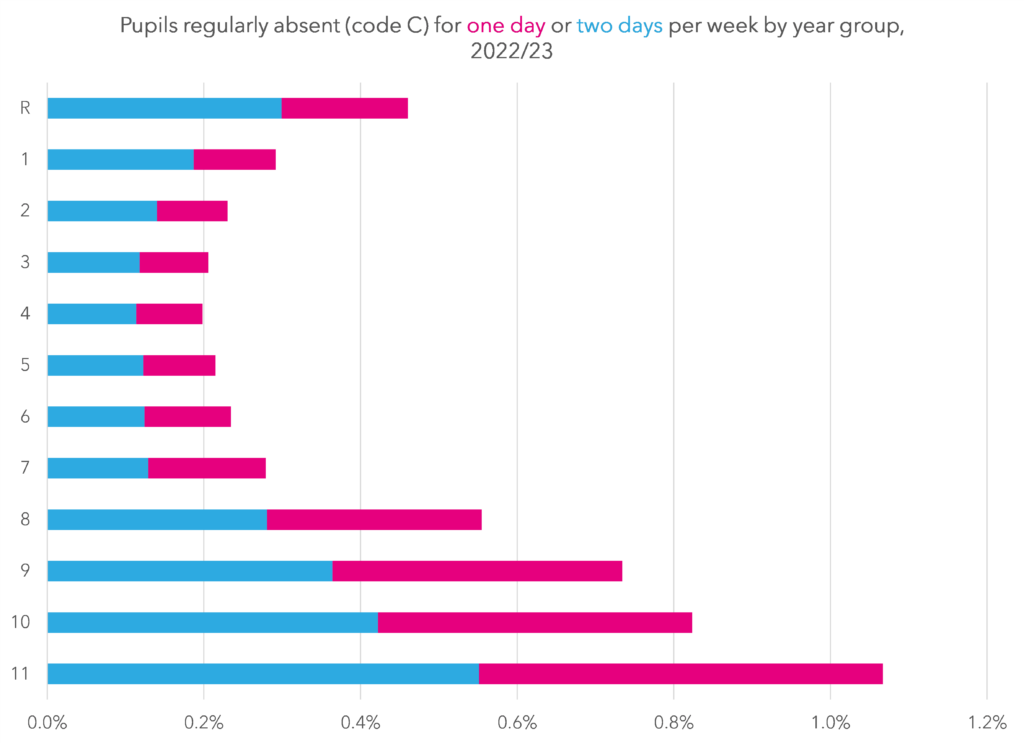
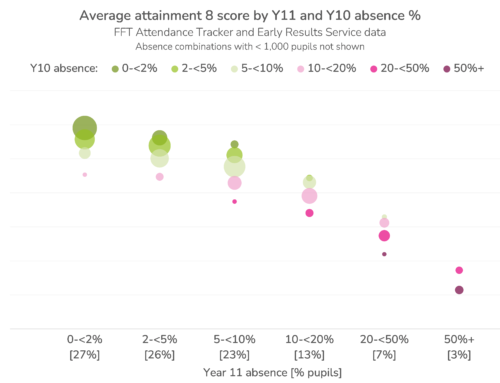
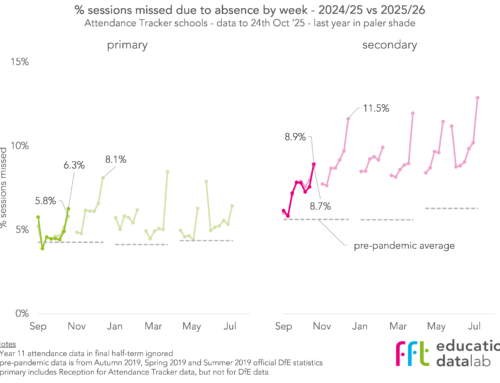
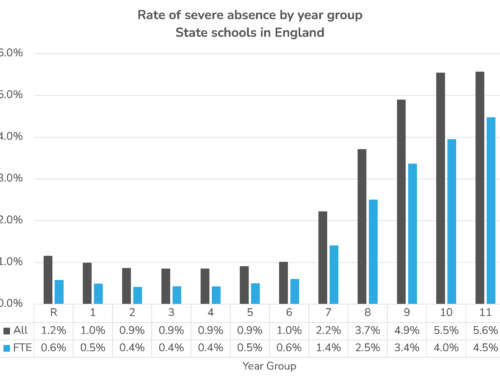
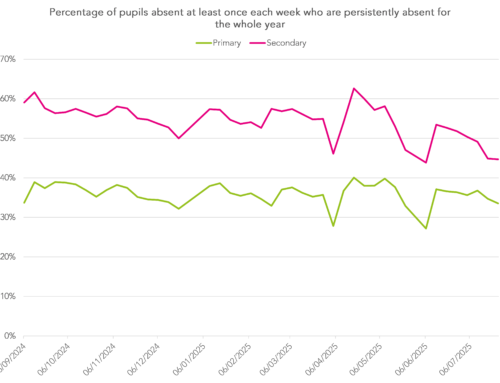
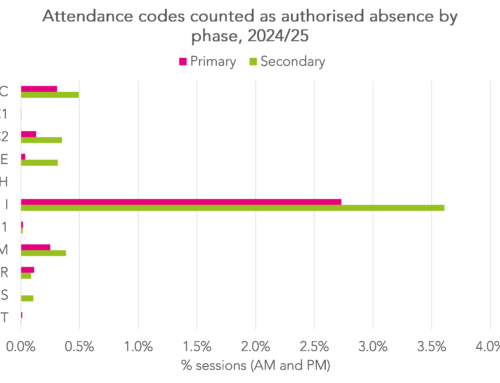
Leave A Comment